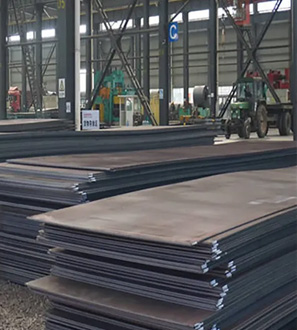Thank you
You are interested in Our support !
Stainless steel plates have high oxidation resistance
Stainless steel plates have high oxidation resistance
Stainless steel plates have a smooth surface, high plasticity, toughness, and mechanical strength, and are resistant to corrosion by acids, alkaline gases, solutions, and other media. It is an alloy steel that is not easy to rust, but it is not absolutely rust free. Stainless steel plate refers to a steel plate that is resistant to weak media corrosion such as atmosphere, steam, and water, while acid resistant steel plate refers to a steel plate that is resistant to chemical corrosive media corrosion such as acid, alkali, and salt. Stainless steel plates have a history of over a century since their introduction in the early 20th century.
Stainless steel plate is generally the general term for stainless steel plate and acid resistant steel plate. At the beginning of this century, the development of stainless steel plates laid an important material and technological foundation for the development of modern industry and technological progress. There are many types of stainless steel plates with different properties, and they have gradually formed several major categories in the development process. According to organizational structure, it can be divided into four categories: austenitic stainless steel plate, martensitic stainless steel plate (including precipitation hardening stainless steel plate), ferrite stainless steel plate, and austenitic plus ferrite dual phase stainless steel plate? Classified according to the main chemical composition or some characteristic elements in the steel plate, it can be divided into chromium stainless steel plate, chromium nickel stainless steel plate, chromium nickel molybdenum stainless steel plate, low-carbon stainless steel plate, high molybdenum stainless steel plate, high purity stainless steel plate, etc. According to the performance characteristics and usage of steel plates, they are classified into nitric acid resistant stainless steel plates, sulfuric acid resistant stainless steel plates, pitting resistant stainless steel plates, stress corrosion resistant stainless steel plates, high-strength stainless steel plates, etc. According to the functional characteristics of steel plates, they are classified into low-temperature stainless steel plates, non-magnetic stainless steel plates, easy cutting stainless steel plates, superplastic stainless steel plates, etc. The commonly used classification method is based on the organizational structure characteristics and chemical composition characteristics of steel plates, as well as a combination of the two methods. Generally, it is divided into martensite stainless steel plate, ferritic stainless steel plate, austenitic stainless steel plate, duplex stainless steel plate and precipitation hardening stainless steel plate, or into chromium stainless steel plate and nickel stainless steel plate. Typical uses include pulp and paper equipment, heat exchangers, mechanical equipment, dyeing equipment, film processing equipment, pipelines, and external materials for buildings in coastal areas.
Stainless steel plates have a smooth surface, high plasticity, toughness, and mechanical strength, and are resistant to corrosion by acid, alkaline gases, solutions, and other media. It is an alloy steel that is not easy to rust, but it is not absolutely rust free.
 English
English  中文
中文  Español
Español 



